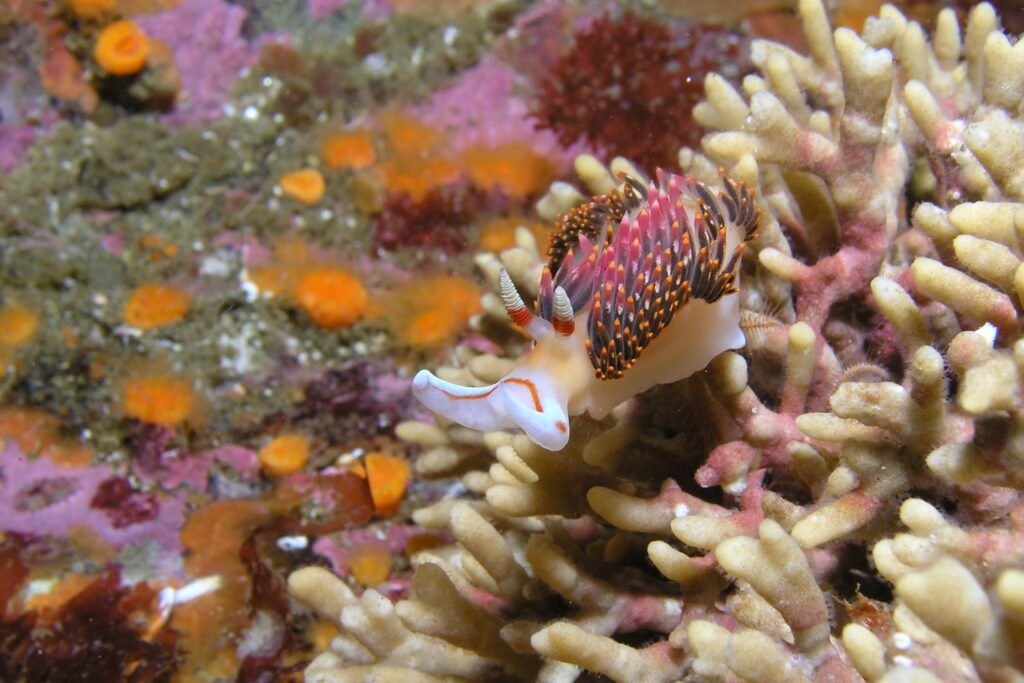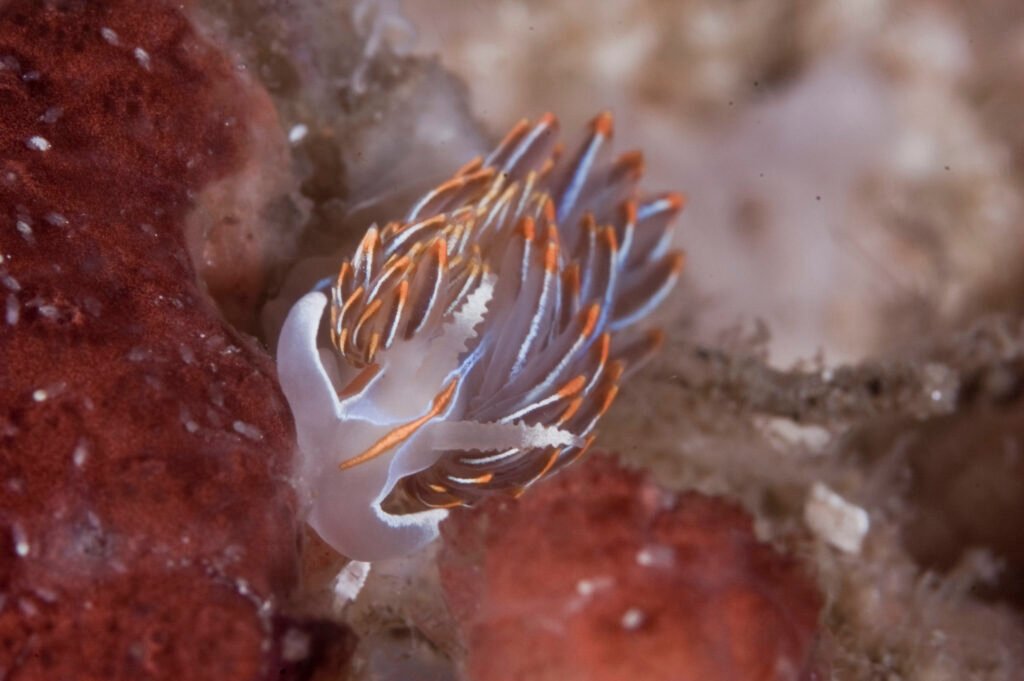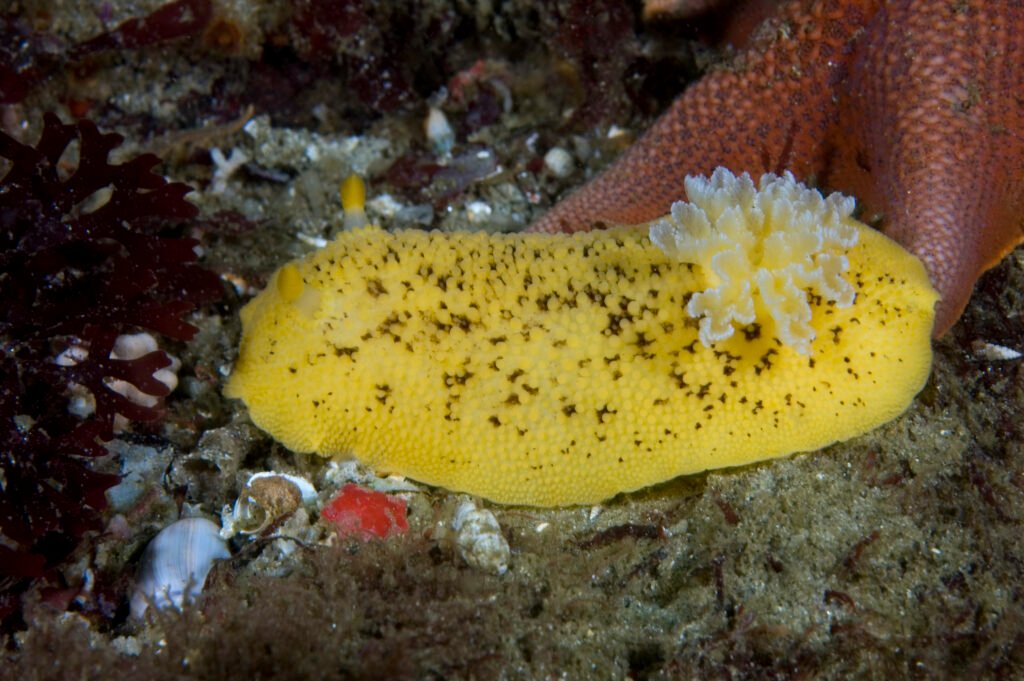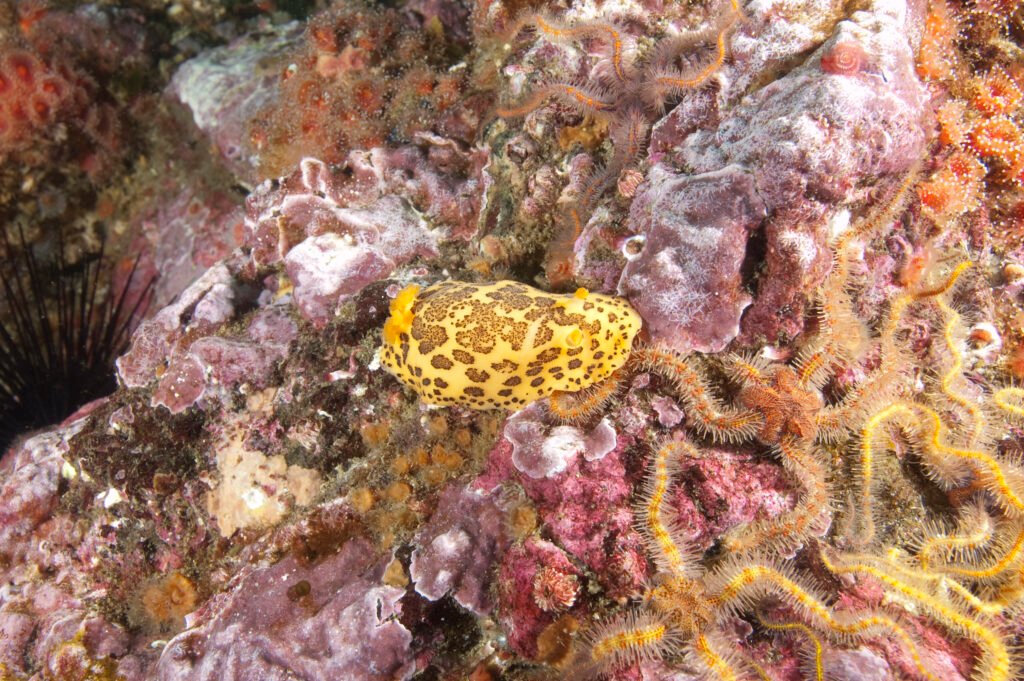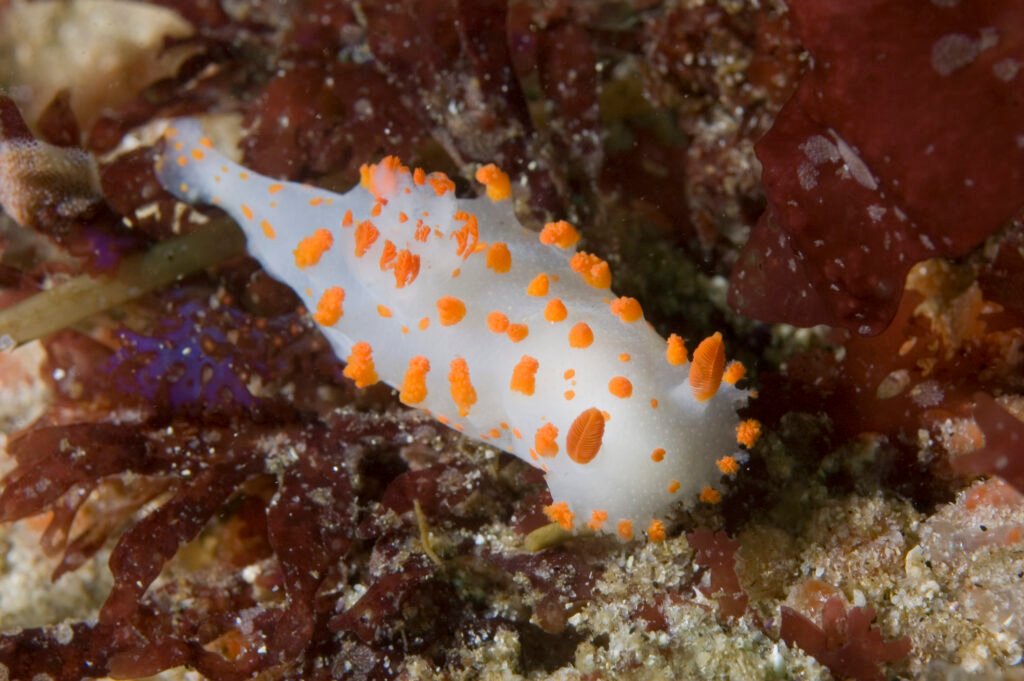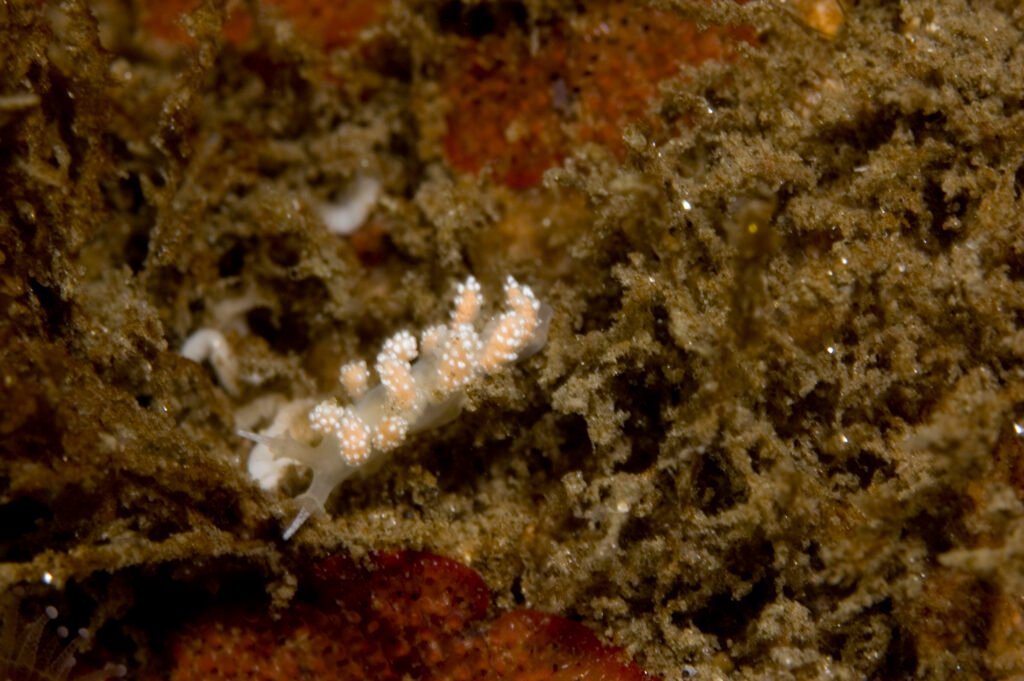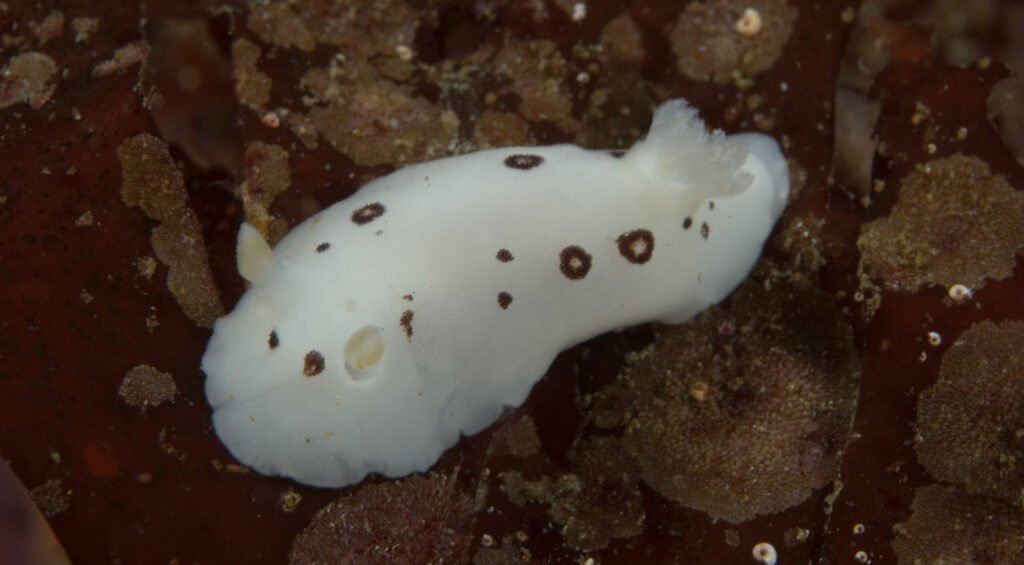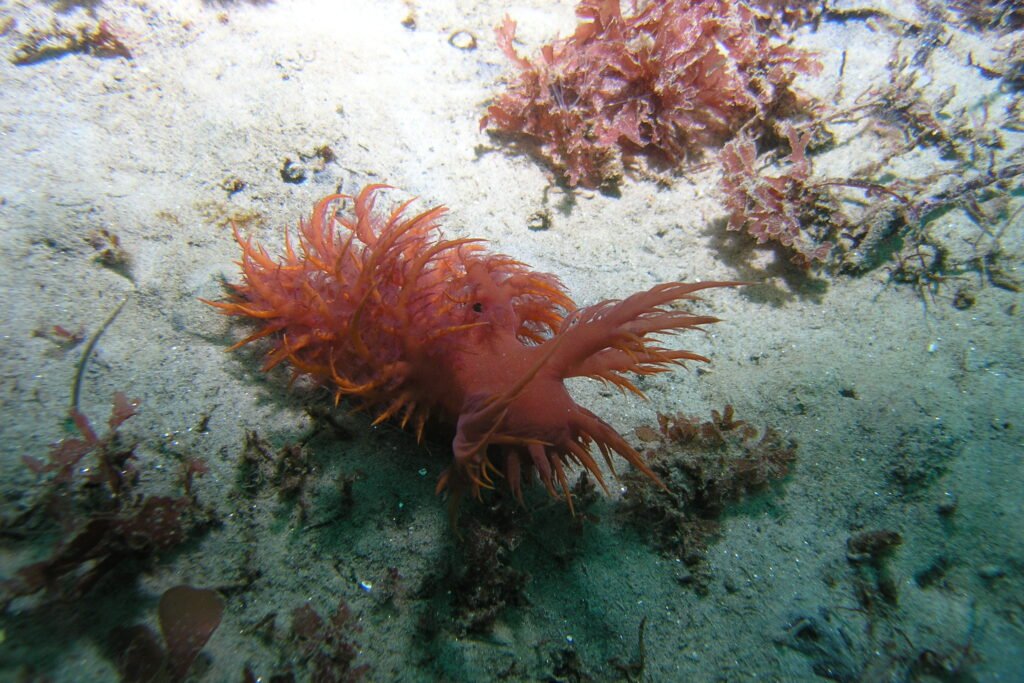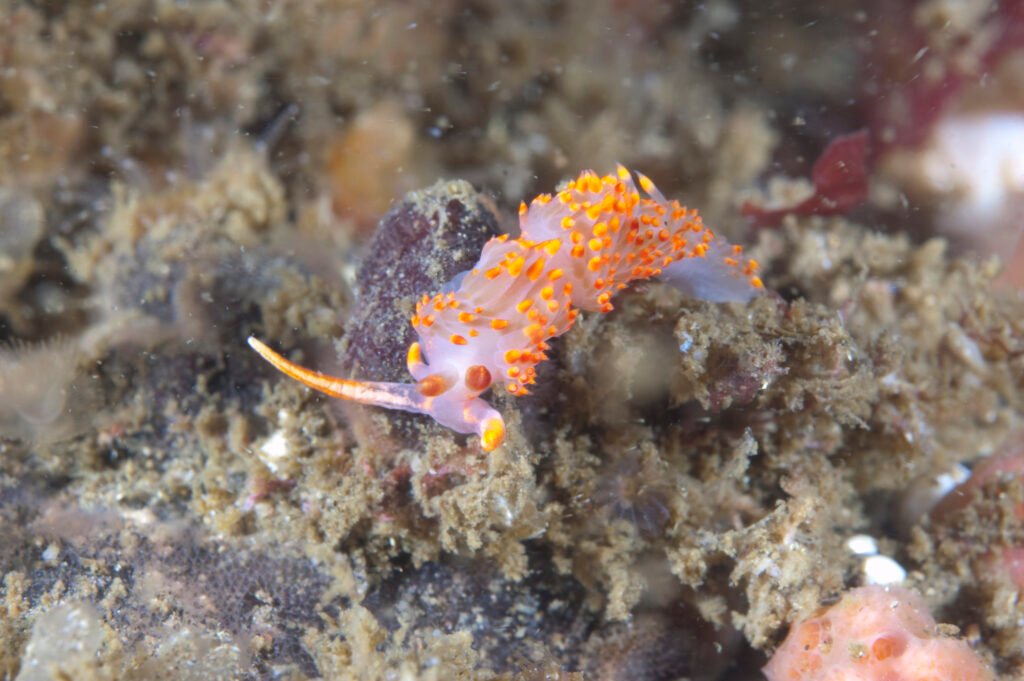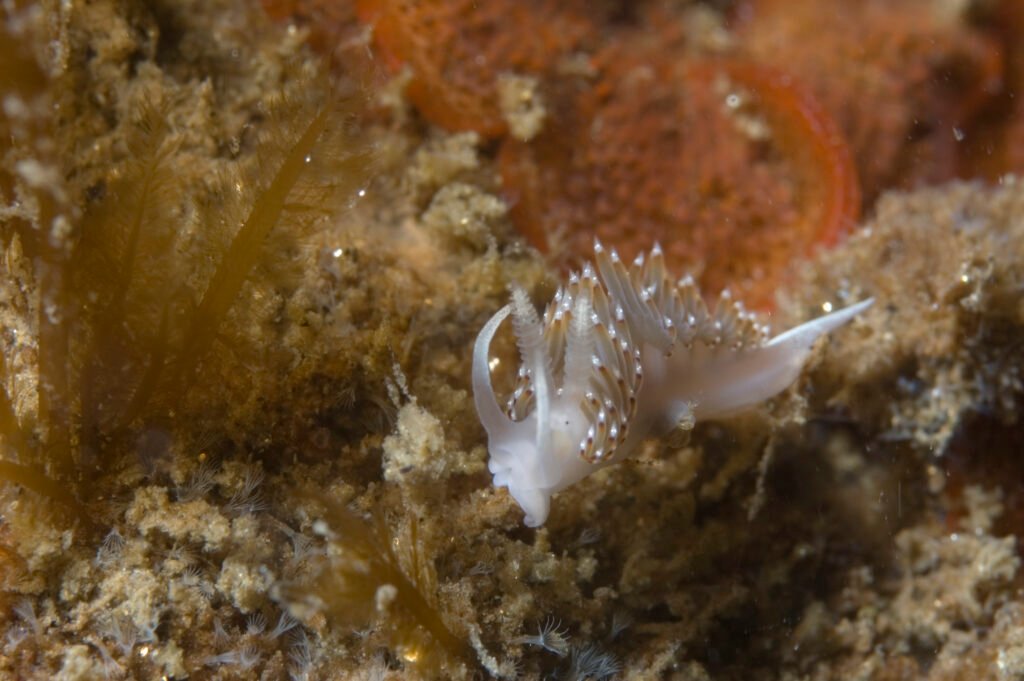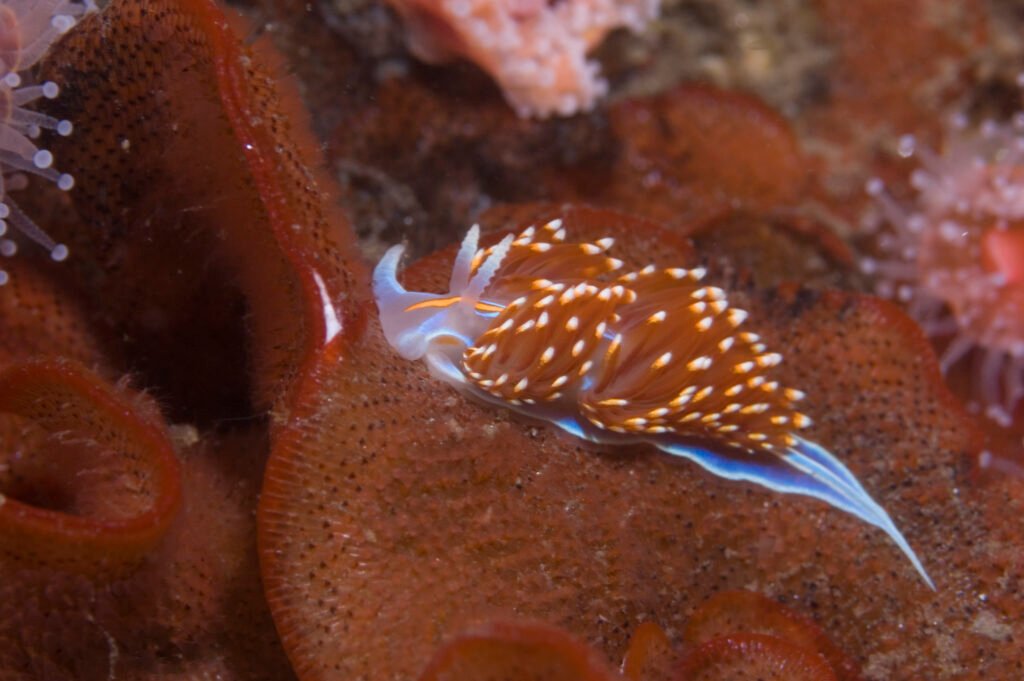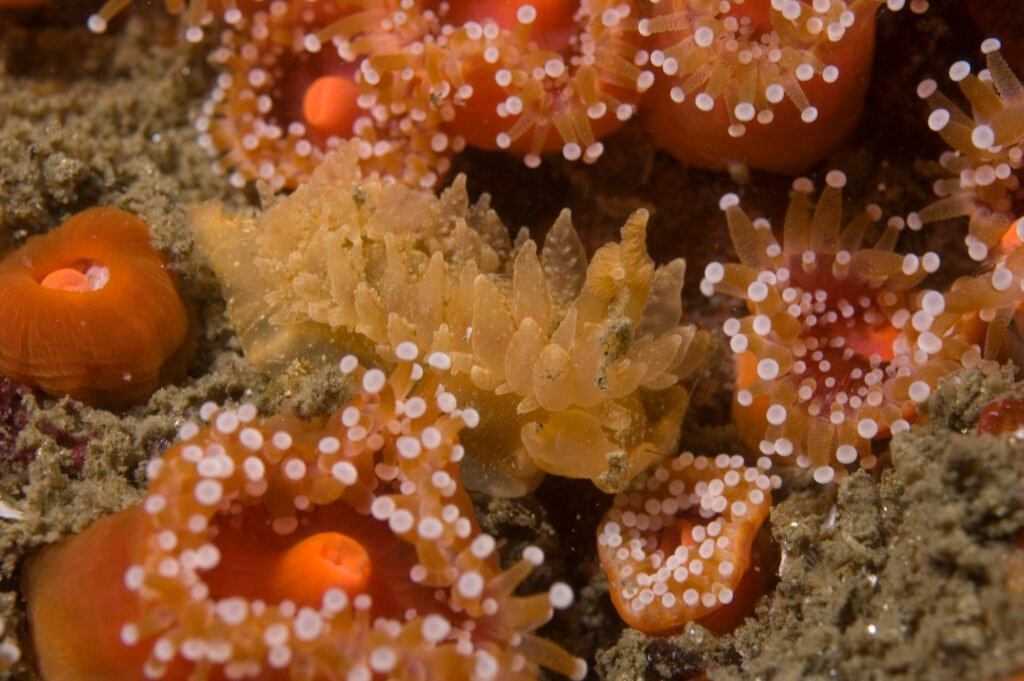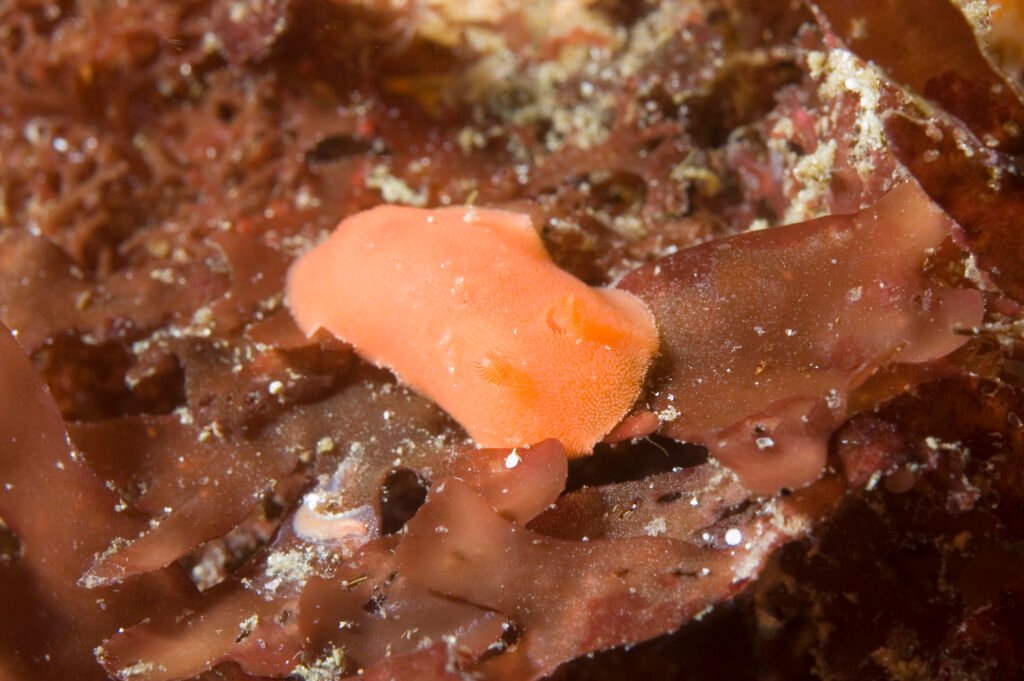Physical Description
Hilton’s Aeolid boasts an elongate body measuring approximately 40 mm. Its dorsal region features clusters of fingerlike cerata. The rhinophores are pale yellow with a distinctive red band at the base. A red line connects the tops of the oral tentacles. The cerata themselves are pink to red, adorned with white tips and a dark gray-black core.
Habitat and Geographical Range
This species is moderately common along the eastern Pacific coast, particularly inhabiting rocky environments.
What They Eat and How They Breed
Hilton’s Aeolid primarily feeds on hydroids and other cnidarians. For reproduction, they likely engage in mating behavior, where individuals exchange sperm. Females then lay eggs, typically deposited in gelatinous masses on suitable substrates. Upon hatching, the larvae undergo a pelagic stage before settling on the ocean floor.
